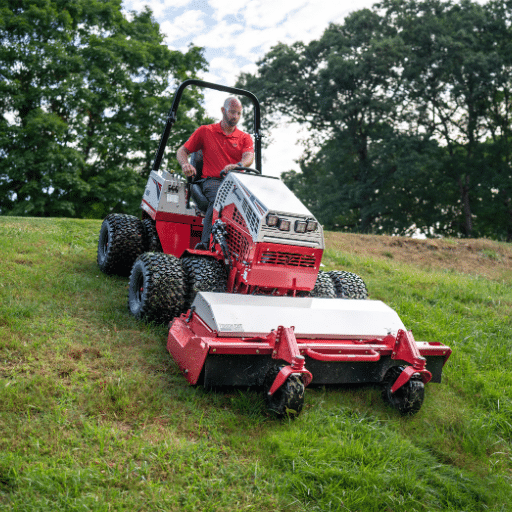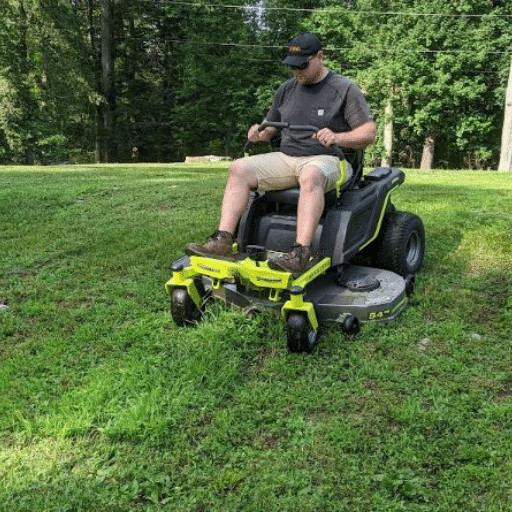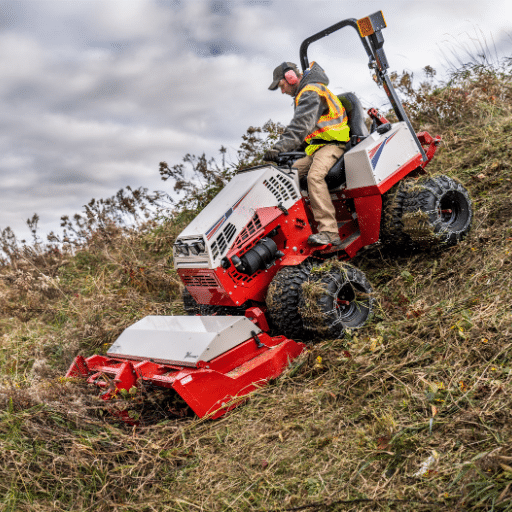In this blog post, we delve into the fascinating journey of potato chips, tracing their transformation from raw tubers to the crispy, savory snacks beloved by millions worldwide. The production line of potato chips is a seamless choreography of machines and processes, each step meticulously designed to ensure consistency and quality. From the initial peeling stage, where potatoes are stripped to their essential, starchy core, to the frying and seasoning phases that imbue each chip with its distinctive flavor, we’ll explore every facet of this intricate process. Finally, we’ll uncover the crucial packaging stage, which guarantees that your favorite chips remain fresh and crunchy on their way to store shelves. By the end of this journey, you’ll have a comprehensive understanding of the artistry and science behind the production of this quintessential snack.
How Does an Automatic Potato Chips Production Line Work?

An automatic potato chips production line operates through a series of interconnected stages, each finely tuned to transform raw potatoes into ready-to-eat snacks efficiently. Initially, potatoes are loaded into washing and peeling machines to remove dirt and skins. They are then sliced uniformly before being transported to fryers, where they are cooked to a perfect crisp. A conveyor system moves the freshly fried chips to the next stage, where they are coated with seasonings to achieve the desired flavor profile. Finally, the chips are cooled and sent to packing machines, which seal them in bags, ensuring freshness and protection during shipping. This automation not only streamlines production but also maintains the high-quality standards necessary for mass distribution.
What is the Role of a Peeling Machine?
A peeling machine plays a critical role in the automatic potato chips production line by efficiently removing the skin from potatoes, enhancing speed and ensuring uniformity. This process reduces labor costs and improves the overall consistency of the final product, as it preps the potatoes for precise slicing. By using rotating brushes or abrasive rollers, the peeling machine guarantees that each potato is smoothly stripped of its skin, minimizing waste and maintaining a high yield. This initial step is vital for maintaining the quality and visual appeal of the chips throughout the subsequent processing stages.
How are Potato Slices Made?
The first step in the potato slicing process entails the addition of peeled potatoes into slicing machines. These machines have circular knives that cut the peeled potatoes quickly and evenly into ‘slices’. The thickness of the slices is very important as it allows for equal cooking during the frying stage. There are also sophisticated slicers which can slice at different thickness without any difficulty. This step reduces waste and increases productivity by providing an efficient and quick way to cut the potato slices into uniformly sized pieces.
What Happens in the Frying Machine?
In the frying machine, potato slices are cooked in hot oil until they reach a golden-brown color and crispy texture. The precise control of temperature ensures even cooking and preserves the chips’ flavor. The conveyor belt moves the slices through the oil, and excess moisture is removed, leaving behind a satisfying crunch. Properly adjusted frying time and oil temperature are essential to achieve the desired quality and prevent oil soak. After frying, the chips are quickly drained of oil to maintain their crispiness and prepare them for seasoning and packaging.
What are the Steps in Potato Chips Processing?

The processing of potato chips involves several key steps to ensure a high-quality product. First, raw potatoes are thoroughly cleaned and peeled to remove any impurities and skin. Next, the peeled potatoes are sliced into even pieces, ensuring consistency for uniform frying. These slices are then placed in a frying machine, where they are cooked to a golden-brown color, achieving the desired crunchy texture. After frying, excess oil is drained from the chips to maintain their crispness. Following this, the chips are seasoned to enhance flavor and finally packaged for distribution. Each stage of the process is carefully monitored to ensure optimal taste, texture, and quality.
The Importance of Blanching
Blanching plays a crucial role in potato chip processing. This step involves briefly boiling the potato slices and then quickly cooling them in ice water. Blanching removes excess starch, ensuring the chips don’t clump together during frying. It also helps to achieve a firmer texture and enhances color retention. Additionally, blanching can inactivate enzymes that might cause discoloration and spoilage, preserving the chips’ appearance and freshness. By incorporating blanching into the processing sequence, manufacturers improve the overall quality and shelf life of the final product.
How is Seasoning Applied to Potato Chips?
Seasoning is typically applied to potato chips immediately after frying while the chips are still warm and slightly oily, which helps the seasoning adhere better. The chips pass through a rotating drum or a tumble drum where they are evenly coated with the seasoning mix. This method ensures that all chips receive a uniform layer of seasoning, enhancing flavor without overpowering the natural potato taste. Various seasonings, ranging from classic salt to exotic flavors, can be used, depending on consumer preference and market trends. Effective seasoning application is vital for delivering the desired taste profile and achieving customer satisfaction.
Why Choose a Fully Automatic Potato Chips Production Line?

Opting for a fully automatic potato chips production line offers several advantages. The automation of the production process not only boosts efficiency but also ensures consistency and quality in every batch. Such a line reduces the need for manual labor, thereby cutting operational costs and minimizing human error. The precision of a fully automatic system enhances the uniformity of slicing, frying, and seasoning, resulting in a superior final product. Additionally, automated lines are often equipped with advanced monitoring systems that help maintain optimal processing conditions, extending shelf life and improving safety standards. Overall, a fully automatic production line is a cost-effective choice that ensures the delivery of high-quality potato chips.
Advantages of Automatic Potato Chip Production
Choosing an automatic potato chip production line significantly enhances production efficiency. Automation streamlines the process, leading to higher output with less manual intervention. It ensures each step, from slicing to frying, meets exact standards, producing consistently high-quality chips. This system reduces labor costs and minimizes mistakes by employing precise technology. Moreover, it features advanced monitoring, which maintains optimal frying and seasoning conditions. Enhanced cleanliness in automated settings improves the shelf life and reduces contamination risks. Overall, automation results in better product consistency, safety, and profitability.
Cost Efficiency in a Full Automatic Setup
A fully automatic setup notably reduces operational costs through decreased labor dependency and increased productivity. It efficiently maximizes output by integrating cutting-edge technology with minimal human supervision. Such systems consistently produce high-quality potato chips by maintaining uniformity across processes like slicing and frying. Automatic systems also improve resource management, reducing waste and raw material use. With advanced monitoring, these setups maintain optimal processing conditions, enhancing the product’s shelf life and safety. Streamlining operations in this manner aids businesses in elevating profitability while ensuring the highest quality standards in every batch.
What Equipment is Essential in a Potato Chips Plant?

Constructing a comprehensive picture of operations at the potato chips plant lifts a litany of certain core element constructions. For starters, I need slicing machines so that the thickness of the chips is uniform and the frying is even. Next is the blanching machine that prepares the slices for frying with respect to colour and texture. In order to fry the chips consistently with the right temperature while producing them continuously, a continuous fryer has to be included. Then after it is a seasoning machine which adds the seasoning in the form of powder or liquid on the chips as they come out of the fry so that all chips are evenly flavored. Finally, it is high quality packaging machines that help in keeping the chips fresh or in a good condition during the warehousing stages as well as transporting them.
Key Features of a Potato Chips Making Machine
A potato chips making machine has several key features designed to enhance efficiency and quality. It starts with an advanced slicing mechanism that delivers uniform slices, ensuring every chip is of consistent thickness and texture. The integrated frying system precisely controls oil temperature and cooking time, producing perfectly crispy chips every time. Blanching features help in preserving the natural color and flavor of potato slices, while automated seasoning units offer precise and even distribution of flavors. Moreover, the machine includes efficient waste management and oil filtration systems that minimize resource use and maintain hygiene standards. Lastly, user-friendly controls and automated monitoring ensure consistent quality with minimal human intervention.
How Does a Slicing Machine Function?
A slicing machine operates by using a series of sharp blades to cut potatoes into uniform slices. First, I place the potatoes into the machine’s hopper. As I activate the machine, the potatoes move towards the rotating blades. These blades, set to a specific thickness, slice the potatoes quickly and efficiently. The consistency in slice thickness is crucial for even frying. The machine’s design minimizes human error, allowing me to achieve precise results with ease. Additionally, its simple controls and safety features ensure I can manage the process smoothly and safely.
The Role of a Flavoring Machine
The flavoring machine plays a critical role in the potato chips production line by applying seasonings consistently and effectively. It evenly coats freshly fried chips with various flavors, enhancing taste and consumer appeal. Using adjustable drums or conveyors, the machine ensures each chip receives a uniform seasoning layer. The process minimizes wastage and optimizes flavor application, crucial for maintaining product quality and taste. Additionally, the machine accommodates various flavoring formulas, allowing manufacturers to offer a wide range of chip flavors to meet diverse consumer preferences. User-friendly controls further enhance operational efficiency and adaptability in the flavoring process.
References
-
Main Steps of Potato Chips Producing Line – Outlines the main processing steps and necessary machines for potato chips production.
-
Introduction of Automatic Potato Chips Plant – Describes the key machines involved in a full automatic potato chips production line.
-
Potato Chips Manufacturing Equipment – Provides an overview of the entire manufacturing process from raw materials to the final product.
Frequently Asked Questions (FAQ)
Q: What is a potato chip line?
A: A potato chip line is a comprehensive system used in the manufacturing process of potato chips, which includes stages from washing and peeling to frying and packaging.
Q: How does an automatic potato chips line work?
A: An automatic potato chips line automates the entire process from slicing the potatoes to frying and packaging them. It includes machines for washing, peeling, cutting, frying, and packing, ensuring high efficiency and consistent quality.
Q: What machines are included in a potato chips manufacturing line?
A: A potato chips manufacturing line typically includes a potato washing and peeling machine, cutting machine, potato chips frying machine, de-oiling machine, cooling machine, and packing machine.
Q: Can the processing line handle both large and small potato chips?
A: Yes, the processing line can be adjusted to handle different sizes of potatoes, producing both large and small potato chips by modifying the cutting machine settings.
Q: What is the role of a dewatering machine in the potato chip manufacturing process?
A: A dewatering machine is used to remove excess water from the potato slices after washing and before frying, which helps in achieving a better frying result and crispier chips.
Q: How does a semi-automatic potato chips line differ from a full automatic line?
A: A semi-automatic potato chips line requires manual intervention at certain stages of the process, such as loading and unloading, while a fully automatic line operates with minimal human input, enhancing efficiency and reducing labor costs.
Q: What are the benefits of using a potato chips frying machine?
A: A potato chips frying machine ensures uniform frying of chips, reducing oil consumption and enhancing the flavor and texture of the final product. It also increases production speed and quality consistency.
Q: Can the potato processing line produce banana chips and french fries?
A: Yes, many potato processing lines are versatile and can be adjusted to accommodate the production of banana chips and french fries, offering flexibility in product output.
Q: What factors affect the production capacity of a potato chips line?
A: The production capacity of a potato chips line is influenced by the size and efficiency of the machines used, the type of potatoes processed, and the configuration of the line, such as whether it is semi-automatic or fully automatic.
Q: How is quality control maintained in the potato chip manufacturing process?
A: Quality control in the potato chips manufacturing process is maintained through regular monitoring of each stage, using advanced equipment to ensure consistency in slicing, frying, and seasoning, and implementing strict hygiene standards throughout the line.









